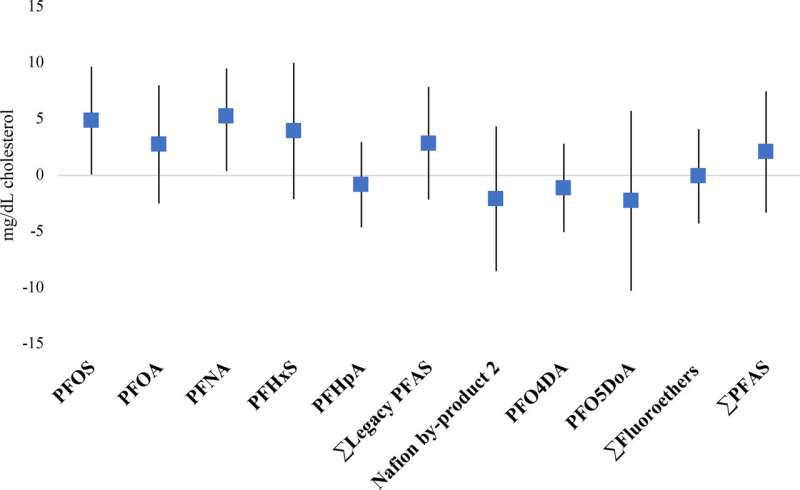
In a new paper detailing findings from North Carolina State University’s GenX Exposure Study, researchers found that elevated levels of per- and polyfluoroalkyl substances (PFAS) were associated with higher total cholesterol and non-HDL cholesterol in participants’ blood. They also found that the legacy PFAS chemicals PFOS and PFNA were most strongly associated with elevated cholesterol compared to the other chemicals, and that the effects were more pronounced in older people.
“Previous studies had established links between PFAS and elevated cholesterol,” says Jane Hoppin, professor of biological sciences, director of NC State’s Center for Human Health and the Environment (CHHE), member of NC State’s Center for Environmental and Health Effects of PFAS, and corresponding author of the paper describing the work. “However, most of the previous work had focused on PFOA and PFOS, though we know that people are exposed to many other chemicals in the PFAS family. So we wanted to look not just at legacy PFAS, but also at certain fluoroethers, a family of chemicals that include GenX and that have similar chemical structure to PFAS.”
The blood samples came from 344 Wilmington residents (289 adults and 55 children) across two sampling efforts in November 2017 and May 2018.
The samples were analyzed to measure levels of legacy PFAS, fluoroethers, and lipid measures (which include total cholesterol, LDL cholesterol, HDL cholesterol, and triglycerides). The blood samples showed high levels of legacy PFAS as well as three new fluoroether PFAS in the blood of nearly all participants. The chemical that started the study investigation, GenX, was not detected. Later research showed that this chemical only lasts in blood a very short time.
Because cholesterol levels can be affected by fasting and fasting was not required of participants, the researchers focused primarily at levels of non-HDL cholesterol, which are reliable regardless of fasting status. Additionally, the researchers took variables such as participant BMI, age, gender, race/ethnicity, and smoking status into account when assessing the relationship between chemical levels and cholesterol.
They also looked at whether the relationship between chemicals and cholesterol differed by age of participant.
They found that the relationship between the legacy PFAS chemicals PFOS and PFOA and cholesterol increased with age and was strongest for participants 63 years and older. For participants under age 18, there were no associations between chemical exposure and cholesterol.
For fluoroether compounds, higher blood levels of Nafion byproduct 2 and PFO5DoA were associated with higher levels of HDL cholesterol, but not non-HDL cholesterol.
“This is the first health study from the GenX Exposure Study,” Hoppin says. “Given the unique PFAS exposure of our participants, we were able to evaluate fluoroethers in terms of their effects on cholesterol levels. This work adds to the body of evidence between PFAS exposure and adverse health outcomes.”
Source: Read Full Article
